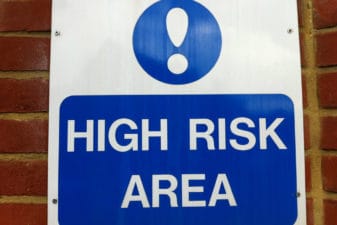Before investing in stocks, there are risks that investors should be aware of. Here I’ll describe some, but remember that risk means something different to each individual. What does risk mean to you?
Company risk
There are inherent risks in every business. Something can always go wrong. In some cases, they can be recurring issues.
For example, in the case of Alaris Royalty Corp. (TSX:AD), the companies Alaris lends money to for it to receive regular cash distributions from could run into trouble, such that they stop paying distributions to Alaris.
Alaris can mitigate that risk by diversifying its revenue stream, so no company contributes more than a certain percentage of revenue.
In the worst-case scenario, a listed company can go bankrupt, and investors, being part-owners of the business, will lose out. Investors can diversify their portfolios to reduce this risk and, of course, aim to invest in great businesses.

Valuation risk
Even the best companies can be poor investments if you overpay for them. Compare the valuations of companies over time, and compare them to their peer’s valuations to determine if a company is overvalued or not.
For example, an investor might compare Toronto-Dominion Bank’s (TSX:TD)(NYSE:TD) price-to-earnings multiple to its five-year average multiple or to the multiples of the other Big Five banks. If there’s a bank that trades at a higher multiple than the others, it could be overvalued.
However, a company that has earnings or cash flow growth acceleration on a per-share basis will likely experience multiple expansion, which would make it have a higher multiple than in the past.
Dividend risk
For dividend stocks, investors should, at the minimum, check the payout ratio to ensure the dividend is safe. Investors should compare the payout ratios of dividend companies with similar peers in the same industry. The Big Five Canadian banks tend to maintain payout ratios of about 50%. So, none of them raise any alarms in terms of dividend safety.
Typically, the lower the payout ratio, the safer a dividend is.
Risk of losing capital
Stocks can go bankrupt, at which time the investors will likely get nothing back. However, even if a stock doesn’t go bankrupt, investors can still lose money if the company does poorly and its stock price slides say, 90%, with no hope of regaining its former glory.
For very volatile stocks that can go up or down 20% in a day, investors might not be able to hold on. At the end of the day, investors should know themselves and avoid stocks they’re not comfortable holding.
Investor takeaway
Before investing in a stock, think of the risks you may be taking. Having a diversified portfolio and focusing on buying quality businesses at good valuations will help mitigate some risks.








